Under Black Carpets, Ilona Gaynor‘s new project, works with police reconstructions, cinematic culture and with ‘Forensic Aesthetics’ to design the perfect bank robbery. And i don’t know how she did it but she managed to get the FBI New York Dept of Justice and the LAPD Archival Department on board as advisors to her study.
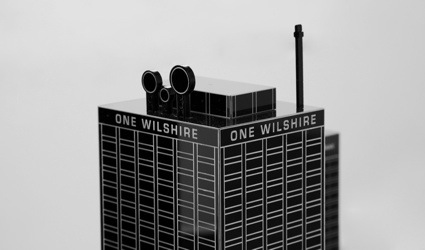 Scale Model, One Wilshire
Scale Model, One Wilshire
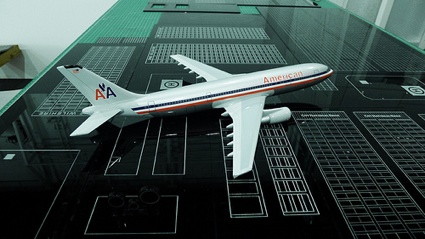
Some legal, political and cultural fields have recently seen a shift from human testimony to material forensics. DNA samples, 3D scans, nano-technology, electro-magnetic microscopes, satellite surveillance and other scientific methods or instruments have started to play a key role in police investigations, political decisions and court room deliberations. Retinal scans, biological remains, landscape topographies and other forensic materials communicate to the judicial system. Just like human witnesses, they come with their own rhetoric of persuasion. Eyal Weizman called it Forensic Aesthetics.
Under Black Carpets is at this stage an early study that will be part of a larger project currently under development. Under Black Carpets presents a meticulous deconstruction of several bank heists simultaneously occurring in downtown Los Angeles, focusing specifically on 5 different banks that centre One Wilshire. The work presents itself as site-specific forensic study. A spatial tool accompanied by a kit of parts, presented as a dense numerical index. Each artifact is individually numbered, assuming the role of the protagonist within the collection and pin-points its own whereabouts on a grid of vertical and horizontal geographical coordinates. The viewer is invited to examine and cross-reference this collection, allowing ones own constructed interpretation of the event as it unfolds from muiltiple, distorted perspectives.
At this point, i needed to pause in my lecture of the description of the project and asked her to tell us more about Under Black Carpets:
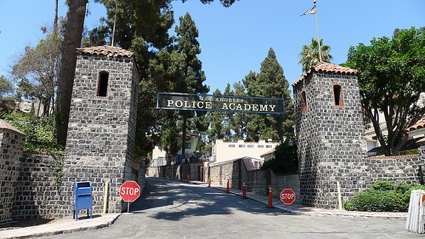 LAPD Police Academy. Image: Ilona Gaynor
LAPD Police Academy. Image: Ilona Gaynor
Your project is developed in collaboration with the FBI New York Dept of Justice and the LAPD Archival Department. How easy is it to work with them? Who are you working with, i’m not asking for names necessarily, but i’d like to get an idea of the type of person these Department would delegate to work with an artist. Are they scientists working in forensics? Members of their press team?
Firstly, I normally approach my research from a great distance to the subject, but I felt with this particular project, it wasn’t going to be quite as effective without actually engaging with the scenarios I wanted to explore.
I wanted to get into the mind-set of what it takes to become a Police officer or ‘Cop’, so I spent a lot of time at the LAPD Police Academy, watching Police engage in intense training: learning how to drive cars in chase simulations, fire guns and partake in classes reciting American Law and its policies. But furthermore, I spent a lot of time in the Police canteen listening to everyday conversations, which led to me buying a copy of So you want to be a cop: what it takes to serve by Scott Butler and Police bible Pocket Partner by Evers, Miller, Glover and Glover – which is global emergency management manual, carried by United States police officers of all ranks and members of the US government. These books describe in detail precise procedures and policies, coupled with a philosophical mindset of what it takes to serve. I mention this, because it’s the dialogue I had within the academy which led to working relationship with the justice department.
I spent sometime with detectives and ex Special Agents in the Bureau’s Bank Robbery/Kidnapping/Extortion Dept in New York City, which was actually more of a connection made with my previous work. I attended various meetings and demonstrations with scientists, but not really with biochemists like you would expect in archetypal representations of forensic science, but more with spatial experts and computational homicide scientists. People who examine areas like post-impact ballistics, vessel trajectories and object reassembly.
To put their interest in the project into context If you read any book on heists or homicide published in last 10 years like Where the Money Is: True Tales from the Bank Robbery Capital of the World by Gordon Dillo and William J. Rehder, you will find that every book you come across will have been written by retired FBI agents or an ex-detectives who had worked on the cases cited in the book. The texts are framed (accidentally or not) as a form of nostalgia, not necessarily for documentation or research purposes, but for pleasure. Whilst reading you could even imagine them holding a cup of black filter coffee with a gun lying next to them on their bedside table, they are so personal.
Interestingly enough, they are mostly anecdotal. There are very little facts or figures cited, but more focused on memories and one-liners. As such they are delightful people and splendidly macabre.
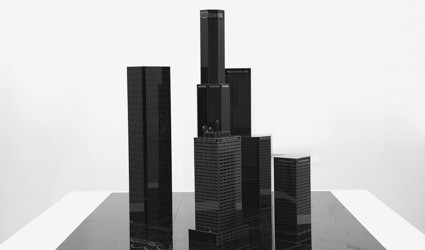 Scale Model of Banks Centering One Wilshire in Downtown Los Angeles
Scale Model of Banks Centering One Wilshire in Downtown Los Angeles
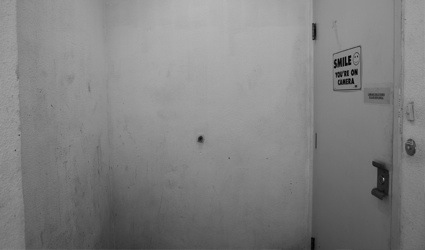 Back Door Entrance, Bank of America
Back Door Entrance, Bank of America
I’m curious about the title of the project: why “Under Black Carpets”? It makes me think of something sinister that has to be hidden…
The title is sinister. It refers to the act and image of stealing. In old cartoons such as Tom and Jerry, Tom the cat would enter the room and slip underneath the carpets, as to sneak upon the mouse (Jerry) in doing this, displaying a huge moving bulge (often cat shaped) that would continually hit furniture and objects in the room because he couldn’t see where he was going – alerting Jerry the mouse as to his whereabouts, rendering the espionage futile, but hilarious. Law enforcement bodies are often portrayed in crime cinema as clumsy, often with plans turning sour, foiled by seemingly petty rules and orders given by superiors by act of protocol. The protagonist hero is often a rogue cop who dismisses the rules and catches the criminal. The black carpet; refers to the archetypal colours found in banks, federal buildings and financer’s offices. It’s also meant to indicate a spatial aspect to the project.
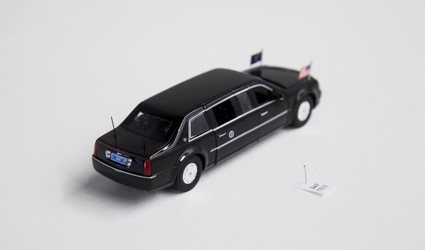 Artifact No.274, Location Coordinates: 17,17, Presidential Limousine
Artifact No.274, Location Coordinates: 17,17, Presidential Limousine
Your project deals with the aesthetic dimension of forensics, a science said to have taken over ‘the era of the witness’ in legal systems. How much faith do you have in forensics now that you’ve studied it from up close (well, at least closer than most of us)? Is this science as indefectible as tv series would like us to believe?
Forensic science has blurred a previously held distinction: between evidence, when the law speaks of objects, and that of the witness, referring to subjects, forensics has become something in-between. TV dramas such as CSI in the US and Silent Witness in the UK, really are as accurately based on reality as entertainment would permit- they exist in a world of simulations, computer based conjecture and biologically stained rags in test tubes. Forensics however isn’t strictly lab based nor does it always deal with bio-chemistry as I’ve mentioned previously, that’s very much not the case, that plays a significantly small role. And it also very much depends on the nature of the crime and where the crime happened. US crime tends to be more exaggerated and extreme, due to the very nature or culture in which people live, especially in Los Angeles. The crime cases publicized, tend to be lot more spectacular then crimes committed in Britain, of course that’s stating the obvious, however I honestly believe that it’s related to the cinematic culture, of which we just simply don’t have the ability, or want to record and transmit news cinematically. Of course why would we?
Michael Mann’s film Heat (1995) was a film shot in downtown LA, with the most notably ‘realistic’ loud gunplay scene in cinematic history to date. It’s cold, blunt and incredibly violent. But what’s interesting about that scene is that it became the basis and inspiration for a very real event that happened in LA a few years later, an event dubbed The North Hollywood Shootout I watched repeatedly the news footage from the North Hollywood Shootout and Heat and found that in comparison after repeatedly viewing it intensely, I decided that actually Mann’s Heat was far more realistic.
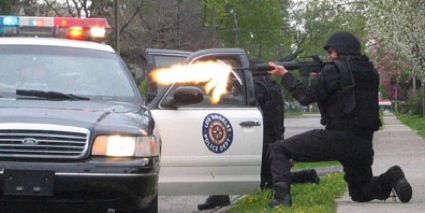 North Hollywood Shoot out. A real robbery that was said to have been a mimicked real life version of the film Heat (as its crime inspiration)
North Hollywood Shoot out. A real robbery that was said to have been a mimicked real life version of the film Heat (as its crime inspiration)
I don’t believe anything is infallible, people by nature are cunning and will always find a way to subvert and distort the truth. Even scientific evidence takes form, as rhetoric by the very nature in which is it presented, monopolized or industrialized. I’m not saying that forensic science is inaccurate but it’s the way in which we construct or curate the evidence is what makes it key. There have been many miscarriages of justice, with many serious crimes going unsolved. A juridical verdict is a legal argument. The end is not normally the ‘truth’ of ‘what happened’, but one of convincing conjecture, which makes it’s dimension beautifully fascinating and deadly.
With such a shift on the emphasis of forensics referring back to taking over the ‘the era of the witness’, I think has left the Police putting too much faith in forensic science, particularly in that of biology, so much so that they have begun to ignore human instinct and intuition, because the definition of truth and reality has never been so unclear.
But then again maybe I’m simply too much of a purist fan of film noir and crime literature.
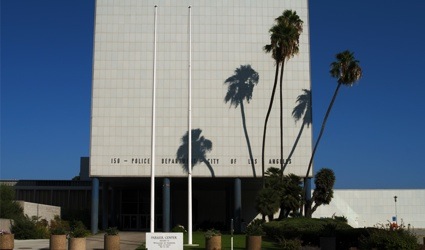 LAPD Police Station, located 6 blocks away from One Wilshire
LAPD Police Station, located 6 blocks away from One Wilshire
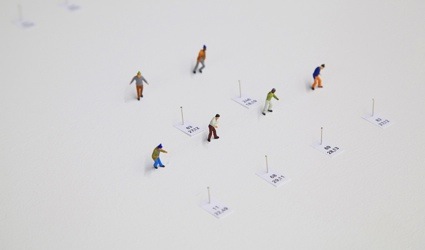 Criminal Activity, Artifact No: 83, 246, 11, 68, 69, 82
Criminal Activity, Artifact No: 83, 246, 11, 68, 69, 82
Could you also explain the part played by ‘forensic aesthetics’ in your project?
‘Forensic Aesthetics’ a term coined by Dr Eyal Weizman at the Department of Visual Cultures at Goldsmiths University. It was an idea that was originally used in an architectural context and was called Forensic Architecture. The idea of using objects to form an argument, as a narration in the absence of actuary evidence is now being openly discussed at various law schools in the US as a mode of future legal practice, which is very exciting! The term is very much at the heart of this project or at least in the research. My project comes into play whereby, I would like to use this theory and expand on the research as a platform to initiate ‘it’ as a mode of design, by giving it form and materiality. Weizman talks about it the broad context of human rights, of course those are important, but my angle is for pleasure, aesthetic speculation and fantasy. Imagine an architectural model – a designed space accompanied by designed artifacts being wheeled into a courtroom and brought up for questioning almost to fulfill the role of the ‘witness’ as evidence. Design can become something to examine, question and decipher through legal channels.
It’s very interesting to me to relentlessly construct narratives from traces that were left over from a traumatic or chaotic event, even if you are stitching together empty spaces that seem impossible and too abstract. The documentation of everyday detail in the construction of archives of clues and cases creates a great pool for crafting hybrid fictions and competing perceptions – a world of secret lives, lies and stories.
Under Black Carpets presents a meticulous deconstruction of several bank heists simultaneously occurring in downtown Los Angeles, focusing specifically on 5 different banks that centre One Wilshire. What are these banks?
The banks are: Bank of America, Mellon Bank, City National Bank, US Bank and Wells Fargo. These were chosen because of their geographic proximity to One Wilshire and precise distance from the LAPD headquarters in downtown LA. The narrative proceeds, a false plane collision with the 30th floor of One Wilshire, as a ruse. One Wilshire is an infamous centralized carrier hotel. It provides half of the worlds connection to the internet; currently it connects: China, Korea, the USA, east Russia and parts of Europe, directing anything toward One Wilshire would attract much attention. The surrounding street block formation would centralize Police, harboring them in one place due to the precise vertical heights of the buildings and the dense geography of those particular blocks. The visual transparency from the ground is also extremely limited. The architecture is positioned in such a way, that staging particular events or moments could be hidden from view behind protruding floors, light refractions from the mirrored glass and thick palm tree heads. Some of the streets are also impossible for helicopters to circulate and enter, however every flat rooftop has its own helipad by state law in that area.
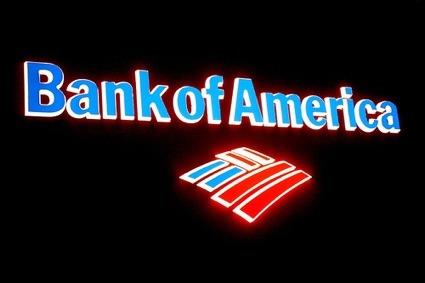 What will be the purpose of the deconstruction? To design the perfect bank robbery?
What will be the purpose of the deconstruction? To design the perfect bank robbery?
Yes. Exactly that. My intention is design the perfect heist. A counter measure to anticipated police reactions based on this research. But not presented as projection like a pre-planned, straight-up plot, but one told through hindsight. Using aesthetics and material form to frame the narrative as an investigation, an archive of evidence for the purpose of constructing, a legal argument.
Finally, what shape does the project take: the project page has models but do you also plan to add 3D renderings? video? essays?
This project is simply a study – a deconstruction for the purpose of seeing something from a birds-eye view (not literally) but a plot device to experiment with. This first part was completed whilst I was the summer research resident at Art Center College of Design in Pasadena. The final project will take the form of artifacts, large scale engineered mechanical devices, architectural physical studies, speculative tools and materials. There will be films – my aim is to shoot Police reconstructions of what they assumed to have happened. There’s a lot to do!
A book or research will also accompany the project, a series of essays and collated documents curated and co-written by Geoff Manaugh (BLDGBLOG) and myself.
The final work will go into an exhibition on display next year at the Lisbon Architecture Triennale, it will be showing in an unused bank vault comprising of 6 rooms in September 2013.
Thank you Ilona!
Previous work by Ilona Gaynor: Everything Ends in Chaos.
Related story: 21 bank branches vs. 21 architecture students.
